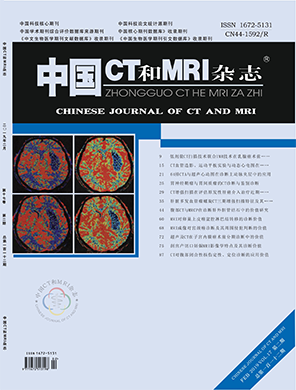Head and Neck Imaging
Application of Apparent Diffusion Coefficient of MR Diffusion-weighted Imaging on the Diagnosis of Prostate Disease*
Author:LIN Jun, ZHANG Zhi-yan, ZHENG Pan-feng,et al.
affiliation:Department of Urology Surgery, Gongan People's Hospital, Jingzhou 434300, Hubei Province, China
PDFAbstract
Objective To analyze the application value of apparent diffusion coefficient (ADC) of magnetic resonance (MR) diffusion weighted imaging (DWI) in the diagnosis of prostate disease. Methods 72 patients with prostate disease admitted to the hospital were enrolled. 36 healthy subjects in the same period were enrolled in the control group. All of them were given routine MR scan and MR-DWI examination. The regions of interest (ROI) were chosen. The signal intensity of DWI and ADC value were detailedly recorded. Statistical analysis was performed on the obtained data. Results When b equaled to 50s/mm2 and 800s/mm2 , the signal intensity of DWI in prostate cancer group was significantly higher than that in prostatic hyperplasia group and control group (P<0.05). There was no significant difference in signal intensity of DWI between prostatic hyperplasia group and control group (P>0.05). When b equaled to 800s/mm2, the ADC value of prostate cancer group was significantly lower than that of prostatic hyperplasia group and control group (P<0.05). There was no significant difference in ADC value between prostatic hyperplasia group and control group (P>0.05). Conclusion The measurement of MR-DWI ADC value can provide an effective basis for the diagnosis of prostate diseases, which has important guiding significance for the differential diagnosis of prostate cancer and prostatic hyperplasia.
【Keyword】Magnetic Resonance; Diffusion-weighted Imaging; Apparent Diffusion Coefficient; Prostate Disease; Diagnosis
【Chart number】697+.3
【Document Identification Number】A
【DOI】 10.3969/j.issn.1672- 5131.2019.02.016
Chinese journal of CT and MRI
th17Volume, th 2 Issue
2019Year02Month

Related articles